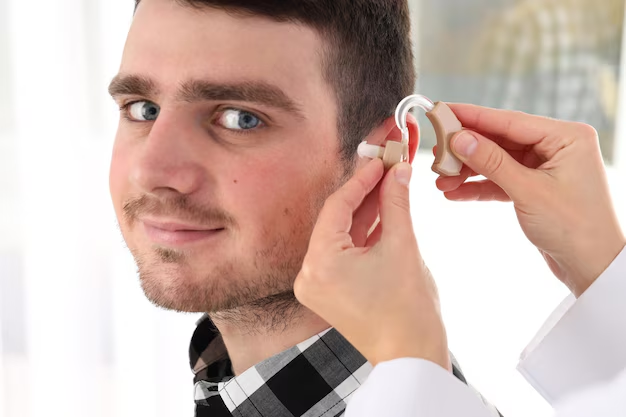Mastering the Care of RIC Hearing Aids: A Step-By-Step Guide to Cleaning
Hearing aids act as essential bridges to the world of sound, but maintaining their optimal function hinges largely on how well you care for them—particularly when it comes to cleaning. Receiver-in-the-canal (RIC) hearing aids are popular due to their discreet design and excellent performance. However, because part of the device rests within the ear canal, these aids contend with earwax and moisture more than other types. Ensuring they are clean not only enhances audio clarity but also prolongs their lifespan. Dive in to discover how to meticulously care for your RIC hearing aids, enhancing your auditory experience daily.
🦻 Understanding RIC Hearing Aids
RIC hearing aids consist of two main components: a behind-the-ear segment containing the processor and battery, and a speaker that sits in the ear canal. This structure allows for an open-fit, often resulting in more natural sound quality. However, its very design makes it prone to wax and debris buildup, necessitating regular cleaning.
Components of RIC Hearing Aids
- Microphone: Picks up surrounding sounds.
- Body: Houses the electronic processor and battery.
- Speaker (Receiver): Transmits sound into the ear canal.
- Dome: The soft tip that sits inside the ear.
- Wax Guard: Protects the receiver from earwax.
🧼 Why Regular Cleaning is Essential
Cleaning your RIC hearing aids is crucial for maintaining sound quality and ensuring the device remains functional. Earwax and moisture can muffle sound or damage the internal components. Moreover, regular upkeep significantly decreases the likelihood of costly repairs and prolongs the device's life.
Effects of Poor Maintenance
- Muffled Sound: Wax build-up can block sound output.
- Device Damage: Excess earwax and moisture can lead to receiver failure.
- Infection Risk: Dirty hearing aids can lead to ear canal infections.
🛠 Tools You Will Need
To clean RIC hearing aids effectively, gather all necessary tools before starting:
- Soft, Lint-Free Cloth: Removes debris without scratching the hearing aid.
- Brush: Helps remove wax from the hearing aid’s surface.
- Vent Cleaner: A small wire used to clean air vents.
- Wax Guards: Used to replace clogged wax guards.
- Drying Kit/Dehumidifier: Keeps moisture at bay.
🧾 Step-By-Step Cleaning Guide
Follow these steps to ensure your RIC hearing aids are cleaned properly:
📅 Daily Cleaning Routine
Prepare Your Workspace: Work on a flat, soft surface to avoid losing or damaging small parts.
Remove and Inspect: Gently remove the aids and inspect for visible wax or debris.
Wipe Down: Use a dry, soft cloth to clean the exterior parts of the hearing aids.
Brush Away Debris: Using the supplied brush, gently remove any visible wax or dirt from the aid and dome.
Clean the Vent: Use the vent cleaner to navigate through any small openings that may harbor earwax.
🗓 Weekly Cleaning Tasks
Change Wax Guards: Replace the wax guard if it appears clogged or dirty.
- Steps to Replace:
- Remove the old guard using the supplied tool.
- Insert a new guard gently into the receiver.
- Steps to Replace:
Dome and Receiver: Remove and clean the dome if applicable, ensuring it’s free from wax or debris before reattaching.
🏠 Monthly Deep Clean
- Dehumidifier/Desiccant: Place the hearing aids in a dehumidifier overnight to remove moisture effectively.
✔️ Summarized Cleaning Routine
- Daily: Wipe and brush off debris.
- Weekly: Change the wax guard.
- Monthly: Use dehumidification tools.
🚫 What to Avoid
While cleaning, there are several actions to avoid to prevent damage to your RIC hearing aids:
- No Water or Cleaning Fluids: Hearing aids are sensitive to moisture and should not be washed with water or soaked with cleaning fluids.
- Avoid Sharp Tools: Avoid using pins or needles to remove wax, as these can damage the receiver.
- Do Not Dismantle: Always seek a professional for internal repairs.
🌟 Additional Tips for Longer-Lasting Hearing Aids
Here's how you can further ensure the longevity and clarity of your hearing aids:
- Store Safely: When not in use, store in a dry, cool place to protect from moisture and dust.
- Handle with Care: Avoid dropping or bumping the devices, which can damage their delicate internal components.
- Check Batteries Regularly: A weak battery may affect performance; ensure it is appropriately charged or replaced as necessary.
🤔 When to Seek Professional Help
Despite regular maintenance, there are times when professional cleaning or repairs are necessary:
- Persistent Issues: If sound quality remains poor despite cleaning, it may require professional attention.
- Visible Damage: Cracks or significant buildup that you cannot safely clean.
- Routine Check-Ups: Regular professional check-ups can help in early detection of unforeseen issues.
🧩 Final Thoughts: Building a Routine
Consistent care plays a pivotal role in maximizing the performance and lifespan of RIC hearing aids. By ensuring regular maintenance and adopting a proactive approach to cleaning, not only do you preserve the device, but you also enhance your everyday audio experience. Create a personalized hearing aid maintenance schedule using reminders or calendars if needed, to maintain regularity and keep your hearing aids functioning at their best for years to come.
Keep your devices in pristine condition—your ears will thank you! 🦻✨

Related Topics
- a Plus Hearing Aid Centers
- a Real Pain Showtimes Near Centerville
- Are Airpods Bad For Your Ears
- Are Apple Second Generation Airpods Hearing Aids
- Are Audien Hearing Aids Just Amplifiers
- Are Costco Hearing Aids As Good As Others
- Are Costco Hearing Aids Good
- Are Hearing Aid Domes Interchangeable
- Are Hearing Aid Subscriptions Worth It
- Are Hearing Aid Tax Deductible